
Vasari Corridor (Italian name: Corridoio Vasariano) is a secret place in the historical center of Florence, which can be visited and which connects the two most important historical palaces of the city.
The Vasari Corridor is a raised covered gallery connecting Palazzo Vecchio with Palazzo Pitti.
The Vasari Corridor was built in five months in 1565 by order of the Grand Duke of Tuscany Cosimo I de' Medici. The reason for the construction was the marriage of Cosimo's son, Francesco I de' Medici, with Joan of Austria. The idea of the construction was dictated by the Duke's desire to move freely between his residence and the government palace, since at that time the duke, like most monarchs, felt insecure on public streets.
The architect of the corridor was Giorgio Vasari.
View of the Vasari Corridor with a tiled roof, coming from the Uffizi (right), over the bank of the Arno River and over the Ponte Vecchio bridge
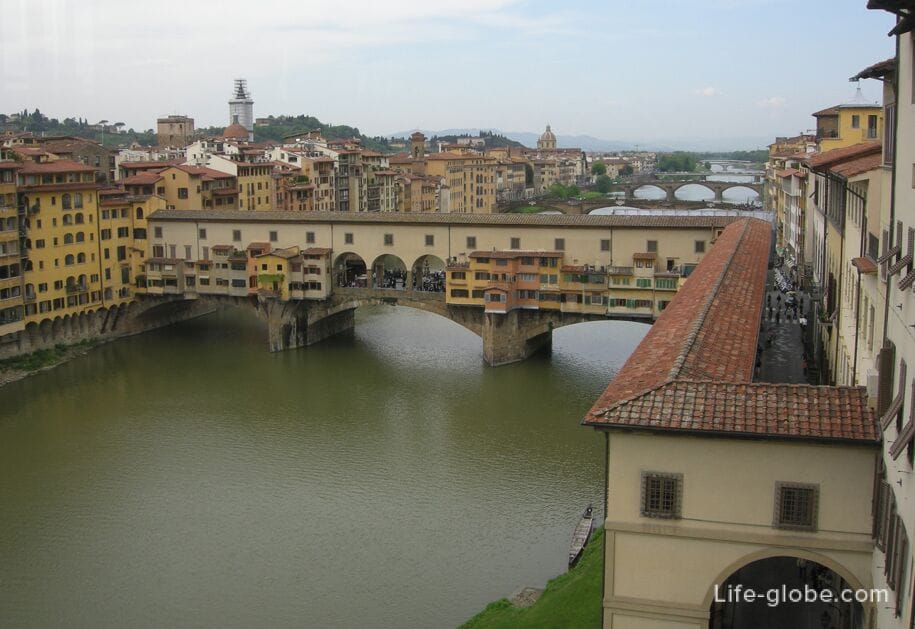
The Vasari Corridor has 73 windows, which offer views of part of the historic center of Florence and the Arno River.
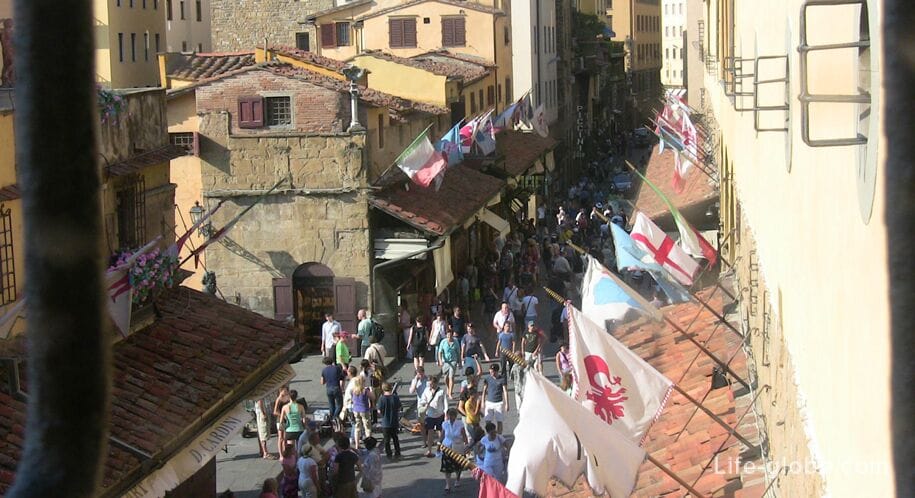
The Vasari Corridor originates from the Palazzo Vecchio, where the Palazzo is connected by a corridor to the Uffizi Gallery (Galleria degli Uffizi).

From the Uffizi Gallery, at the embankment of the Arno River, the corridor is an arched raised structure that smoothly crosses and runs over the most visited and famous bridge of Florence - Old Bridge (Ponte Vecchio).

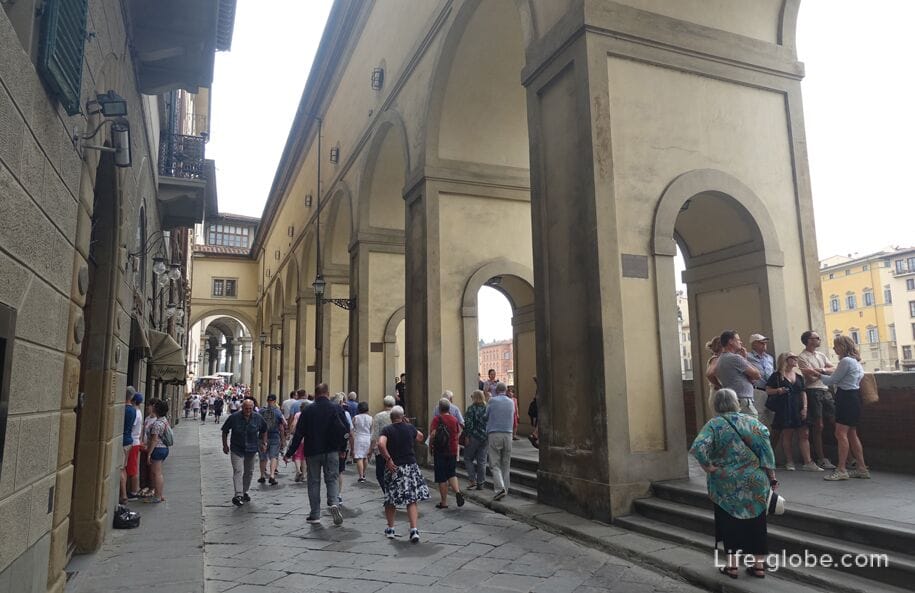

View of the Vasari Corridor and the Vecchio Bridge
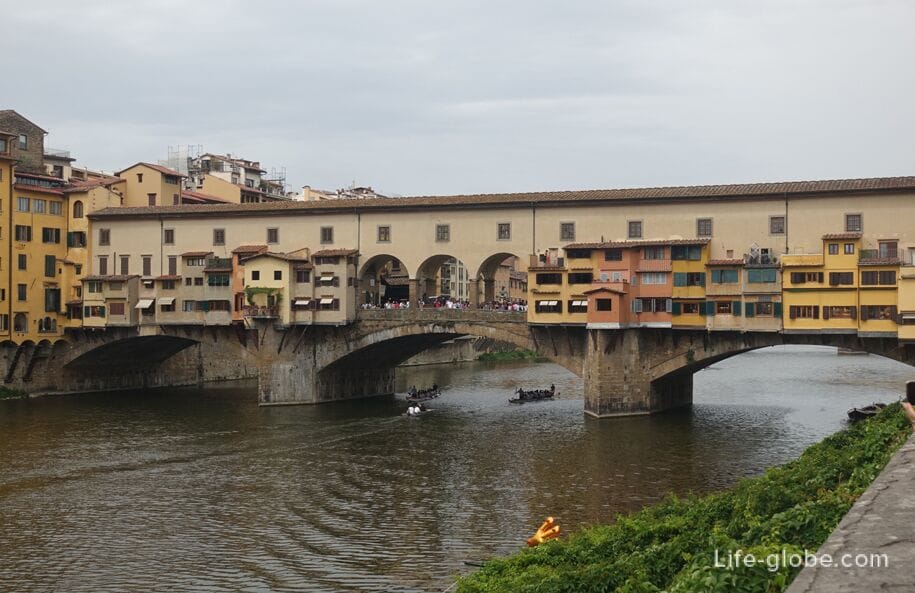
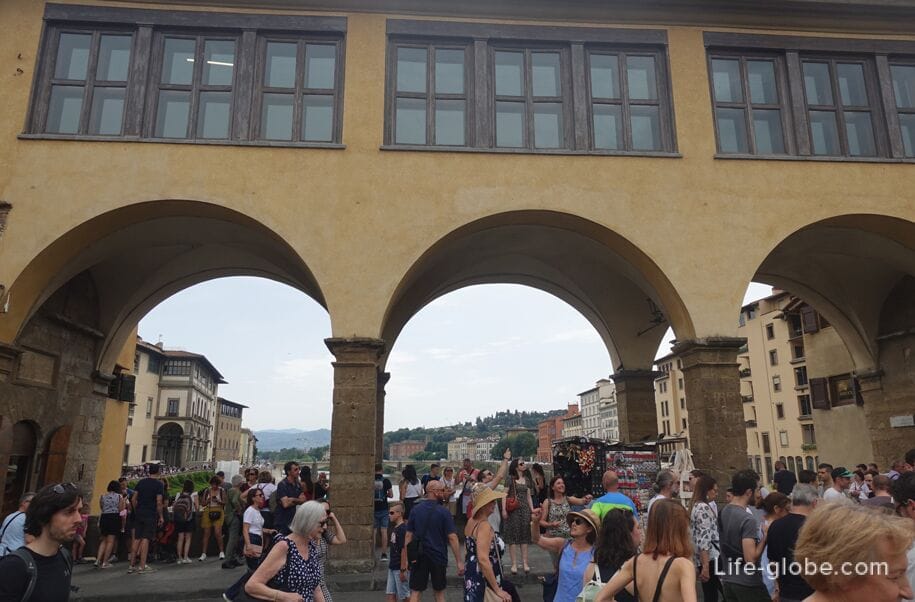
At the southern end of the bridge, the Vasari corridor runs around the Mannelli Tower (Torre dei Mannelli) and has an arch over Via de' Bardi.
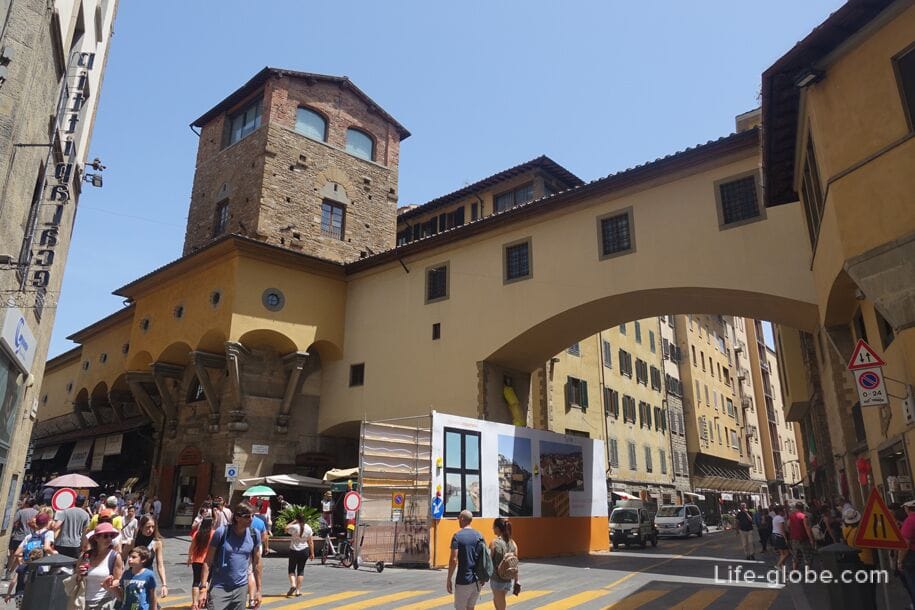
Then the corridor passes over the loggia of the Church of St. Felicia (Chiesa di Santa Felicita).
At this point, the corridor had a balcony, protected by a thick railing, facing the interior of the church, so that the Grand Duke's family could follow the services without mixing with the population.

Then the corridor connects to the Palazzo Pitti, which has a beautiful adjacent garden.
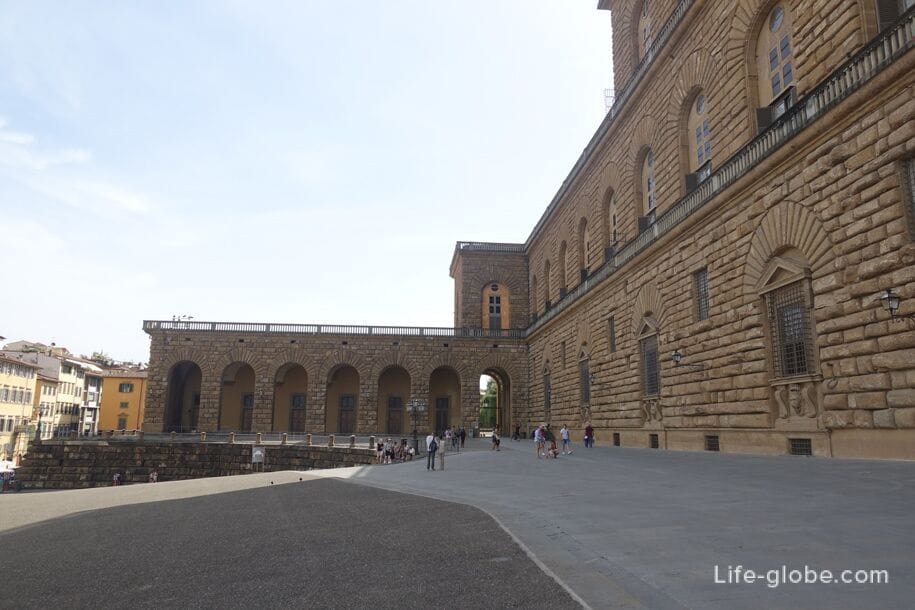
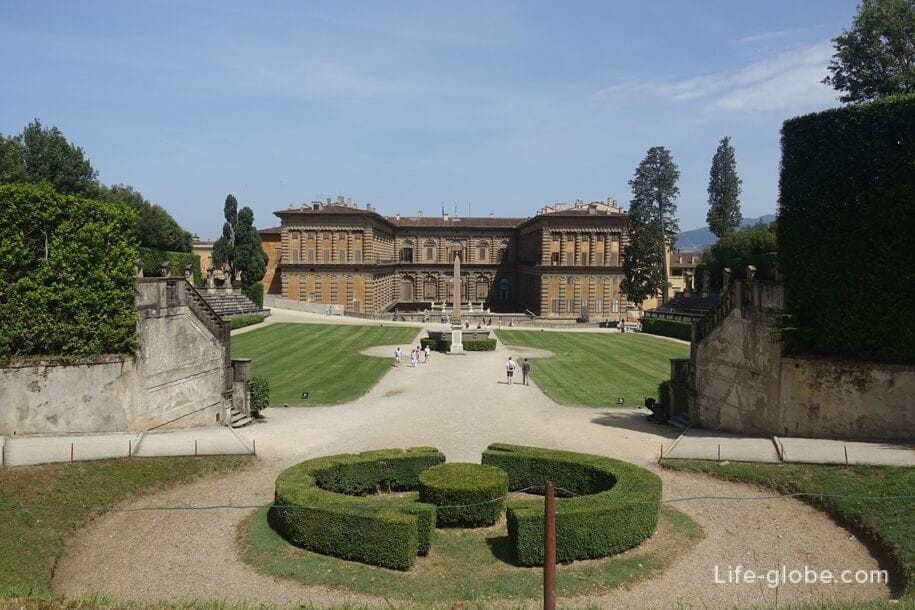
Today, the Vasari Corridor is part of the Uffizi Museum complex (Museo degli Uffizi) and is accessible only in one direction, that is, from the Uffizi (entrance) to the Palazzo Pitti (exit). At the end of the route, visitors can choose whether to go out to the Boboli Gardens or continue their journey in the Pitti Palace, next to the Palatine Gallery.
Antique sculptures, a collection of Greek and Roman inscriptions, frescoes from the 16th century and historical summaries of Florence are on display in the corridor.


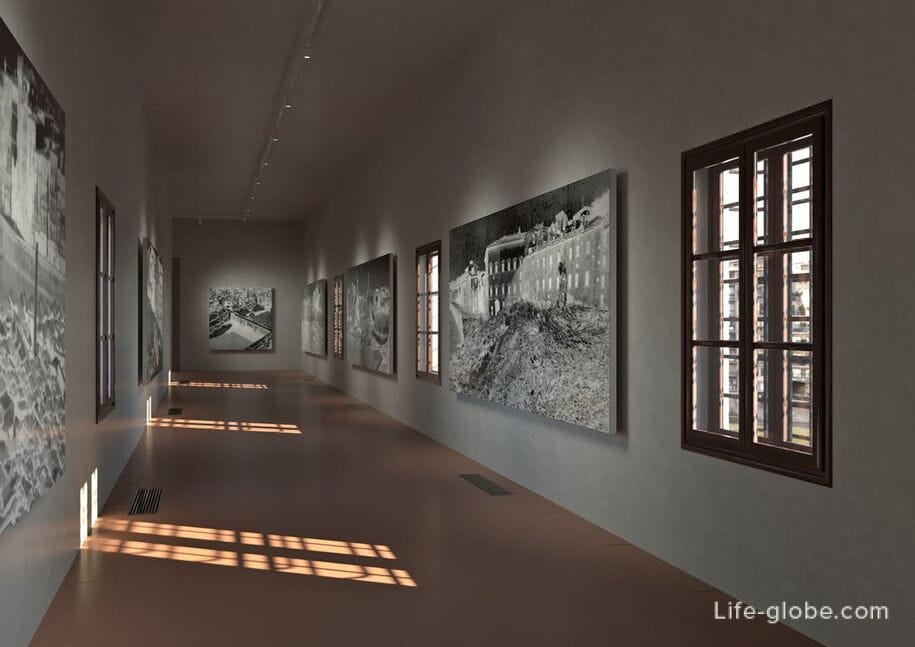
The total length of the Vasari Corridor is about 760 meters.
The corridor is accessible to people with disabilities.
A visit to the Vasari corridor is paid, with tickets.
To clarify information about visiting the Vasari Corridor, the exhibition in the corridor, opening hours, cost and conditions of ticket purchase, please visit the official website of the Uffizi Museum: www.uffizi.it .
All accommodation facilities in Florence (hotels, apartments, guest houses, etc.), including in the historical center of the city and more remotely from it, can be viewed and booked here 